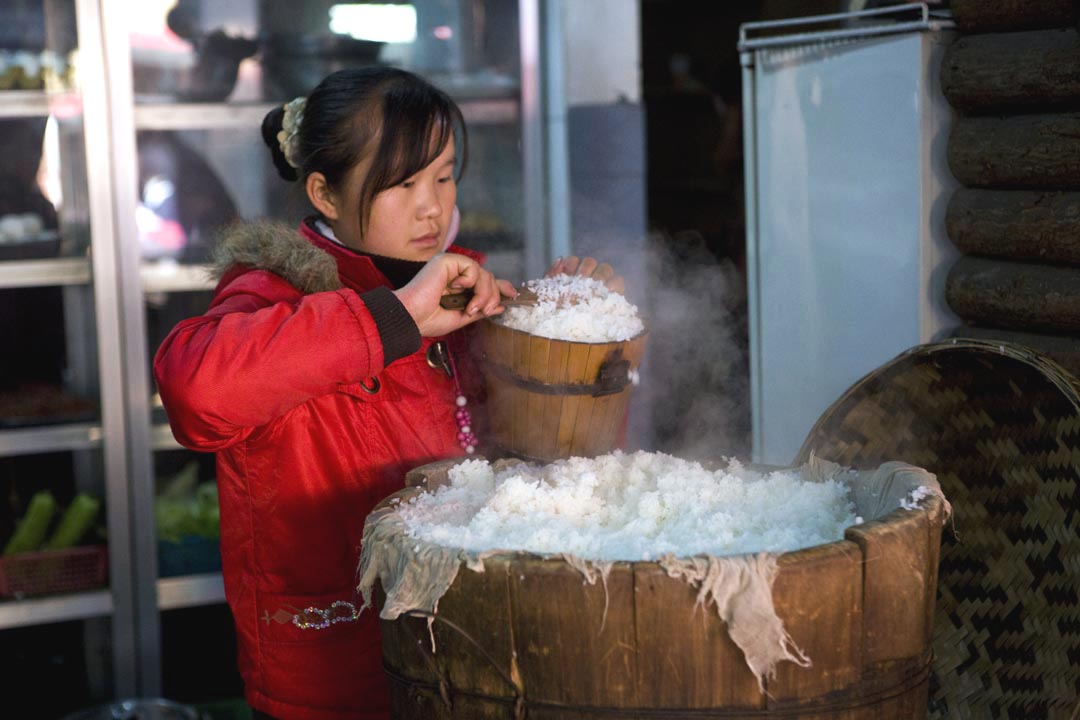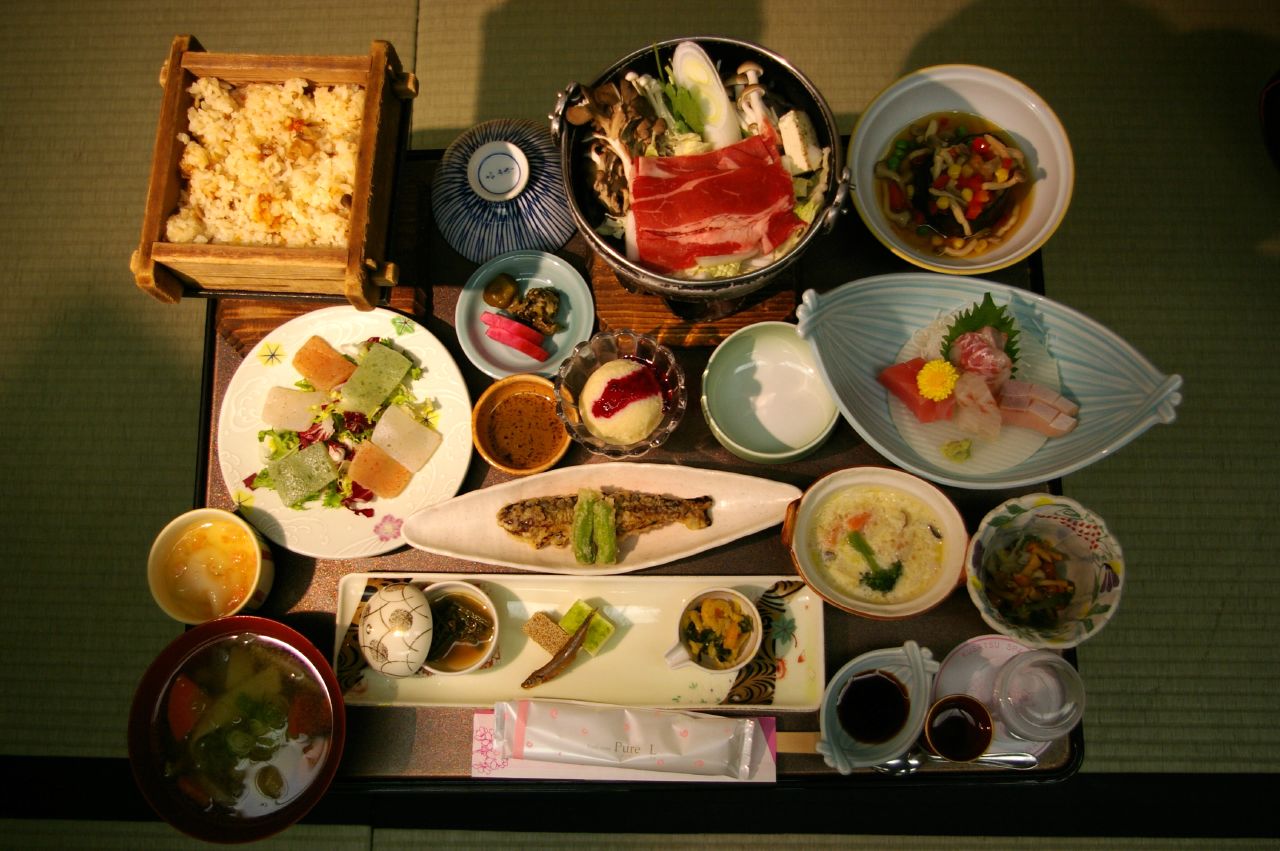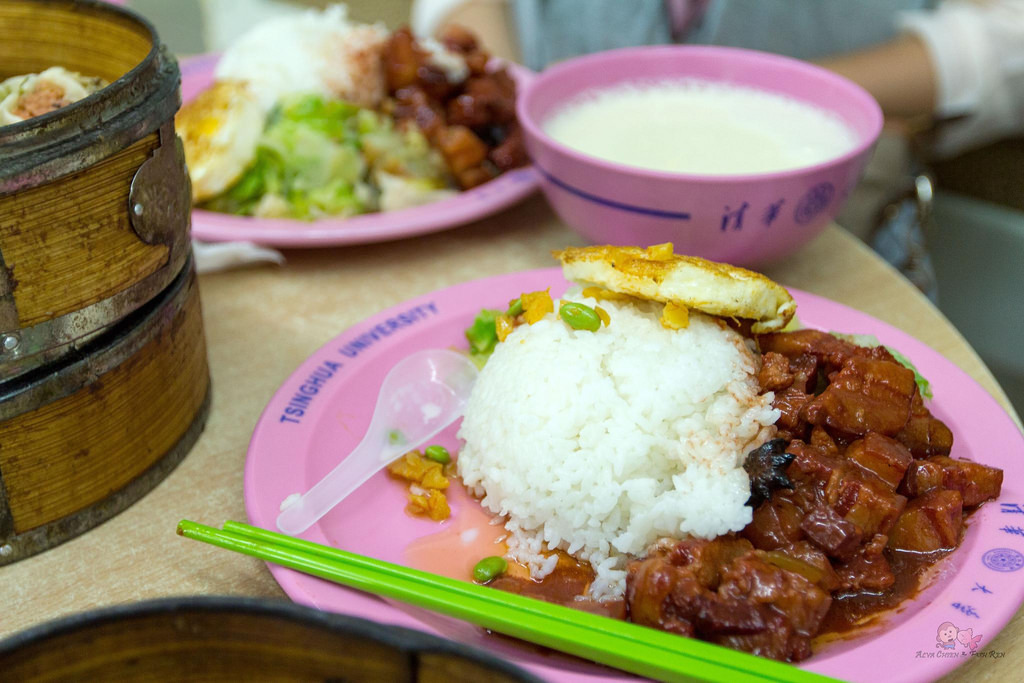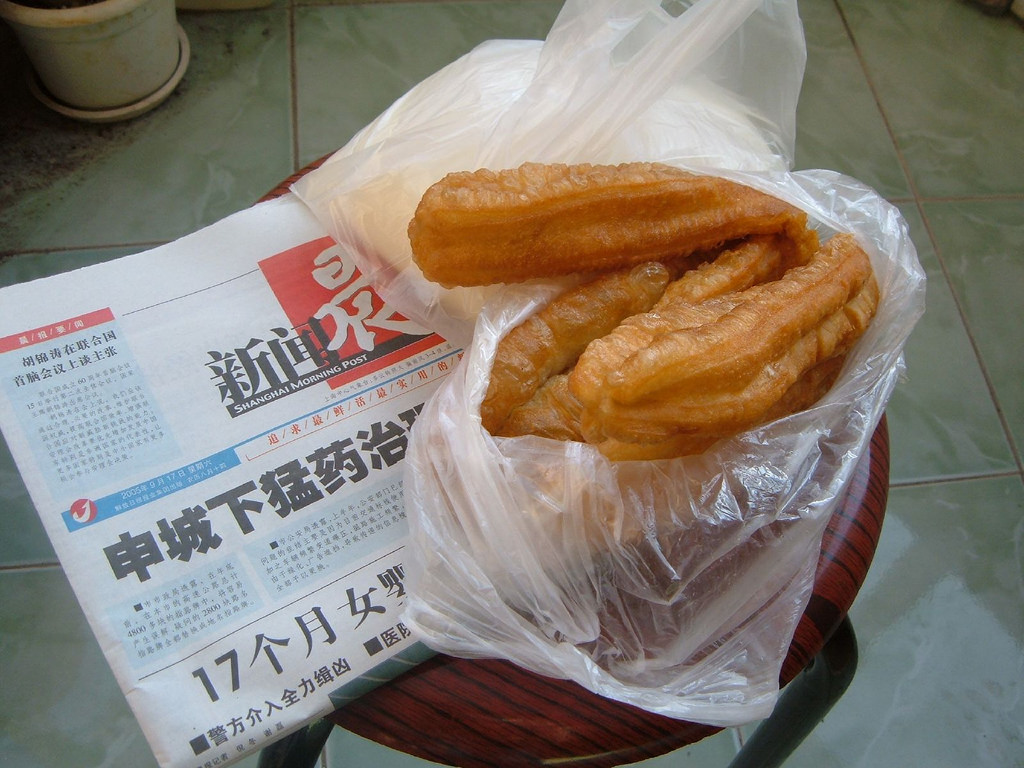Food and Drink: Daily Meals
Rice is so important to Chinese cuisine that the word fan means both “rice” and “meal.” There are approximately eight major regional cuisines in China: Sichuan, Hunan, Cantonese, Fujian, Zhejiang, Anhui, Jiangsu, and Shandong. Particularly popular is the Cantonese dim sum that is characterized by multiple dishes of bite-sized foods, including sweets, that are served communally in a single course. Mongolian-inspired hot pot is common throughout southeast Asia.
Breakfast
Breakfast in China is often rushed and simple, often involving nothing more than soy milk and rice congee at home. Eating youtiao (fried dough) or a steamed bun on the way to work is also common. Noodle soups, zongi (rice dumplings), and egg crepes are also found on Chinese breakfast tables. In the southern region, more leisurely and elaborate savory dim sum is typically served for zaocha, or “morning tea.” In this case, dumplings—pan-fried, steamed, or in soup—are very common, as are steamed pork buns, scallion pancakes, and turnip cakes.
Lunch
Businesses and schools usually break for lunch around noon, when many Chinese eat in canteens or eat lunches brought from home. It is common to eat only a small selection of meat and vegetables along with noodles or rice. Eating is often secondary to the desire to take a mid-day nap, for which reason lunch breaks can last until around 2pm.
Dinner
Dinner, the main meal of the day, typically begins between 6 and 8pm. It consists of many distinct dishes—soup, meat, and vegetables—served in a single course. In the north, wheat noodles are a common accompaniment, while in the south, rice is traditional. Fish, pork, and duck are common, accompanied by vegetables that are prepared in a number of ways, but are never raw.
Sweets
Sweets are typically served at the same time as other dishes in a meal. Buns with sweet dousha (red bean paste) are popular, as is babao fan (rice pudding). Some meals, however, are finished with fresh fruit or tong sui (sweet, hot soup).
Article written for World Trade Press by Christine Kiilerich.
Copyright © 1993—2025 World Trade Press. All rights reserved.

 China
China 


